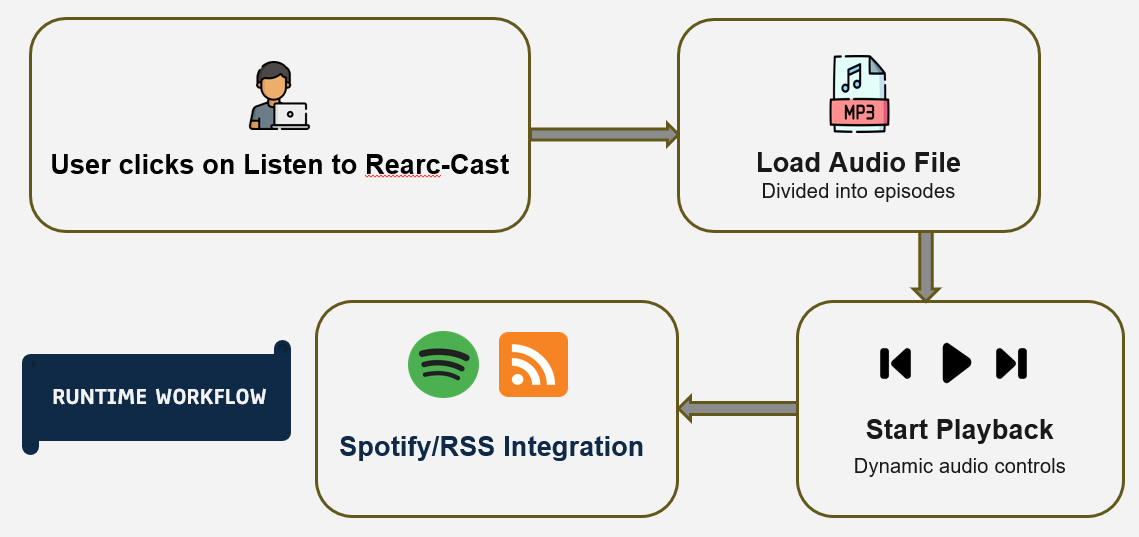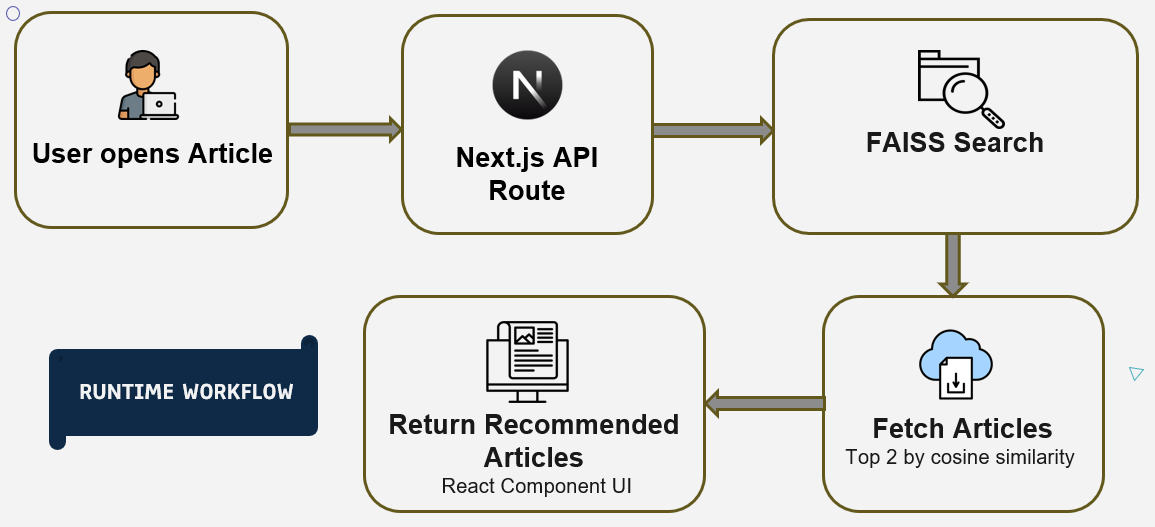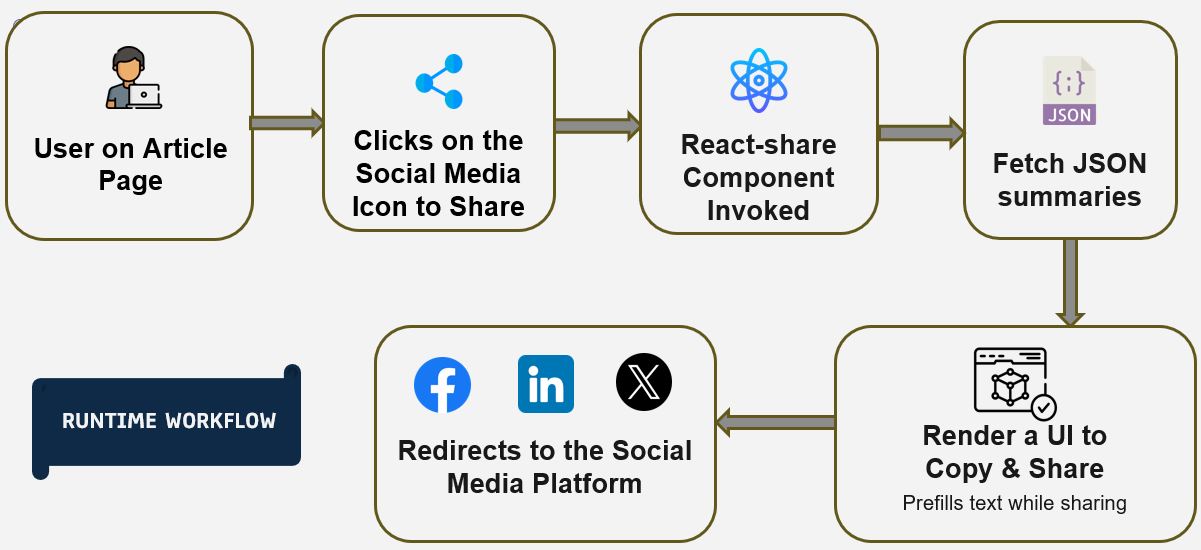
Rearc-Cast: AI-Powered Content Intelligence System
Learn how we built Rearc-Cast, an automated system that creates podcasts, generates social summaries, and recommends relevant content.
How to leverage AI to boost content discoverability and engagement.

Hi, I'm Vatsal Parikh. I am a recent graduate with a Masters in Data Science from Indiana University, Bloomington. I was a remote AI & Data Analytics Intern at Rearc from June to July, 2025.
At Rearc, we're constantly exploring ways to make our content more accessible, engaging, and shareable. Over the past two months, I've tackled these challenges directly through my internship project: Rearc-Cast.
At Rearc, we put a lot of effort into writing detailed, useful technical blogs. But I realized that reading isn't always convenient for everyone, especially when you're commuting or busy juggling tasks. We want readers to effortlessly discover other interesting content after finishing an article, instead of just seeing what's most recent. I also noticed sharing our articles on social media required readers to spend extra time crafting captions, making the whole process a bit tedious. These were the challenges I aimed to address: improving accessibility, encouraging deeper content exploration, and simplifying social sharing, all without adding complexity to our existing platform.
To tackle these goals, I built Rearc-Cast around three key AI-driven features. Each one integrates smoothly with our blog and was thoughtfully designed to make our content experience richer and more intuitive.

To improve content accessibility, I created a system that automatically converts text-based articles into clear, easy-to-listen-to podcasts. Using OpenAI’s tts-1-hd text-to-speech model, I processed each blog post by cleaning and segmenting the article text into manageable chunks (typically around 3,000 characters each) to ensure audio quality and coherence. These files are hosted directly on our static assets and served via an interactive audio player component embedded within the website. This feature effectively broadens the reach of our content, allowing readers to conveniently listen to technical insights during commutes or multitasking scenarios.

To enhance content discoverability, I implemented a semantic recommendation system. At build-time, I generated embeddings for each blog post using OpenAI’s text-embedding-3-small model. These embeddings represent the semantic content of articles in high-dimensional vector spaces. Leveraging FAISS, an open-source vector database, I indexed these embeddings to retrieve similarity search queries. At runtime, a custom API endpoint loads the precomputed FAISS index and quickly retrieves articles semantically similar to the current one being viewed, suggesting meaningful follow-up reading. This method could increase user engagement by providing relevant, contextual recommendations instantly, without adding latency to the user experience.

To simplify social sharing, I introduced automated content summaries optimized specifically for different social platforms. Utilizing OpenAI’s language model, gpt-4o-mini, I generated concise, targeted summaries for LinkedIn, X (formerly Twitter), and Facebook. Each summary captures the essence of the corresponding article in a tone tailored explicitly for its respective platform: professional and insightful for LinkedIn, concise and catchy for X, and conversational for Facebook. These summaries are generated during the build process and stored in JSON files served statically. A React-based component then loads these summaries instantly when users click the share buttons, making the sharing process frictionless and consistent in messaging.
To bring Rearc-Cast to life, I used a balanced and efficient technology stack designed to optimize performance, maintain simplicity, and scale easily:
Rearc-Cast was developed with scalability and further enhancements in mind. Moving forward, the audio experience could be personalized further by using custom brand-specific voices via TTS providers like AWS Polly or ElevenLabs. Additionally, shifting build pipelines to fully automated AWS Lambda functions would streamline content deployment, providing instant updates whenever new articles are published. For semantic search scalability, migrating from local FAISS indexing to a fully-managed AWS OpenSearch Serverless cluster would be a logical next step, enabling rapid searches even at scale.
Developing Rearc-Cast provided an incredible opportunity to integrate advanced AI techniques into a practical, real-world engineering context. Through careful planning, thoughtful design, and iterative development, I successfully enhanced the accessibility, discoverability, and shareability of Rearc’s technical content without adding complexity or compromising performance. I'm especially thankful for the mentorship and collaborative support provided by Milin Patel, Michael Kaufman, Cristina Orlando and my colleagues at Rearc, who greatly enriched my learning experience and helped bring Rearc-Cast from concept to production-ready implementation.
I hope this project provides a starter pack for the readers on how there could be new and delightful ways to engage with our content. It was truly a pleasant experience working at Rearc!
Read more about the latest and greatest work Rearc has been up to.

Learn how we built Rearc-Cast, an automated system that creates podcasts, generates social summaries, and recommends relevant content.

Overview of the Talent Pipeline Analysis Rippling app

An AI-powered bias detection program, which takes inputted PDFs and extracts the different forms of bias found (narrative, sentiment, slant, coverage depth, etc.).

The journey of building a serverless AI chatbot for Rearc.io
Tell us more about your custom needs.
We’ll get back to you, really fast
Kick-off meeting